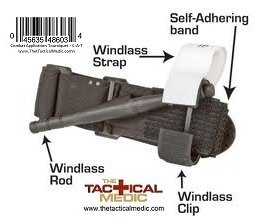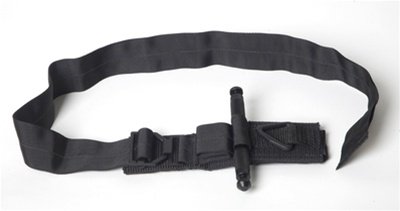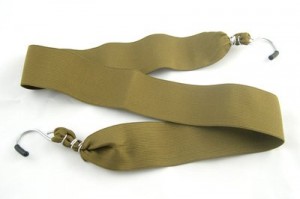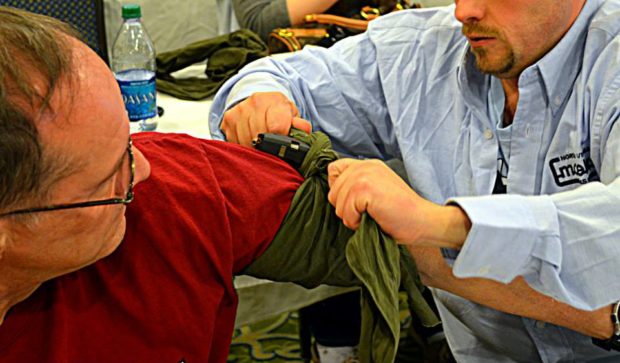This is a guest article from my friend Jonathan Willis. Jonathan is a retired fire department lieutenant, paramedic, and instructor. Jonathan is a wealth of knowledge when it comes to all things medical and has written an excellent article on tourniquet selection.
Not all tourniquets are created equal.
As the modern tourniquet establishes its rightful position as the gold standard of pre-hospital bleeding control, manufacturers race to establish a foothold as “the” go to unit. There are some great items on the market that, when needed, can drastically change the outcome of an otherwise fatal event. For little impact on the wallet, you can save lives, possibly your own. But take note, not all tourniquets are created equal.
I recently had an exchange with an individual on the topic of building your personal medical kit. This is a vitally important dialogue for anyone interested in proactively managing the emergent situation. When the topic of tourniquets came up, this individual who has no trauma management training or experience, boldly stated, “The ABC tourniquet is THE best tourniquet on the market”. I was somewhat surprised by the proclamation and had to ask the individual upon what experience he was basing this. The short version of the story sounded like the well-articulated argument of a fourteen-year-old girl. “A friend of mine knows a (insert impressive credential here) that said so.”
As a proud practitioner of critical thought, as I hope we all are, this dog simply doesn’t hunt. Don’t be pulled into the fan boy standards of doctor, medic or instructor idol worship; we are talking about life or death here. To truly appreciate the market choices available, and make kit purchases tailored to your needs, we must understand the differing types, qualities and applications of the modern tourniquet.
It is in my opinion irresponsible to suggest that the TK4 is superior to the SOFT-T, or the CAT is inferior to the SWAT-T. These are apples to oranges statements. This article is not about which you should buy, or what I prefer. This article is about what tourniquets you should evaluate for a specific use. Saying whatever tourniquet is THE only option for you is great until that ONE isn’t around and you’re bleeding to death. I most certainly have my preferences, based on years of training and experiences on the street. I have very intelligent counterparts that disagree with my position. This is fine as we train on what we use AND what we don’t.
With years of experience as an instructor and boots on the ground experiences as a Fire Lieutenant, I feel it best and more descriptive to break tourniquets into unofficial classifications. I feel that placing tourniquets into one of the following categories best summarizes your options; Primary, Secondary and Improvised/Field Expedient.
A Primary tourniquet will be the most commonly used for pre-hospital or military operations. The TCCC (Tactical Combat Casualty Care) standards designate approved tourniquets, which represent the highest success potentials for pre-hospital care options. These tourniquets will almost always, when applied quickly and appropriately, insure a stoppage of blood loss from arms or legs. (It should be observed that larger legs might require two tourniquets).
It is a requirement that these tourniquets be designed for self-application using one arm. Common examples of Primary tourniquets would be C-A-T, SOFT-T and the SOFT-T Wide. These are generally the most expensive selections and will take up more room in storage than other types of tourniquet but are unquestionably the highest probability of success. Most reported failures of any model described in this category are the direct result of improper application, so be wary overly disparaging positions. I had VERY strong opinions of a now redesigned tourniquet; as such my position has softened. If you have room in your bag, or better yet on your belt, this is the direction to go.
Next comes the Secondary tourniquet. It is fair to say the secondary tourniquet represents the “It’s better than nothing” option. Akin to carrying a Ruger LCP when you’d really rather have that M&P. I have, and carry, both based on NEED. Much like the aforementioned handgun selection, if it’s appropriate for your situation, the Secondary tourniquet can meet the needs of uncontrolled extremity bleeding if you’ve mastered the device in training.
Examples of these devices would be the TK4 or the SWAT-T. Secondary tourniquets can be easily obtained for less than $20. They have a much smaller storage footprint than Primary tourniquets, for situations where space is at a premium. Limitations for these devices will be in one-handed application or the application to the leg. Secondary is also an appropriate term as these options can act as a positive back up to the C-A-T or SOFT-T.
Your Improvised or Field Expedient options are pretty commonly known. These are the tourniquets that many of us engineered for merit badges in our youth. Also commonly referred to in many civilian grade, watered down efforts towards first aid education of the masses. There are some tricks of the trade that can result in a well-crafted, highly functional tourniquet. But these rely on you to have some very specific items on your person at the time of injury or very soon thereafter. This is simply not practical.
Betting your or a loved ones life on your ability to find that perfect strap or super strong windless at the most stressful moment of your life is a fools bet. A belt, shirt or narrow piece of cordage applied to such wounds will almost always be fruitless. I mention this category of tourniquets primarily to convey a message that your other options are too simple, affordable and available to ignore.
My hopes are that the information provided here will encourage everyone to seek knowledge through training and experience that can result in lives saved. We must be proactive not reactive.
“We Must be active participants in our own rescue.” – Dave Spaulding
Jonathan Willis
Some of the above links (from Amazon.com) are affiliate links. If you purchase these items, I get a small percentage of the sale at no extra cost to you.





